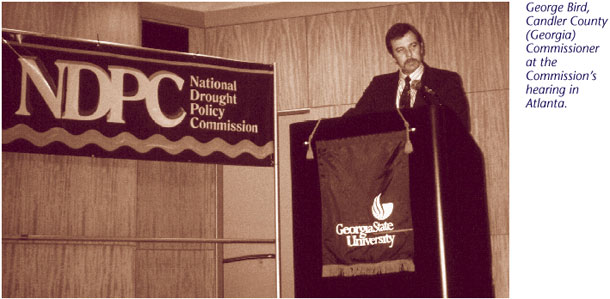|
|
| Return to Table of Contents |
 |
amount of planning large cities do. But emergency conditions—not enough water for minimal household uses—may still arise in small communities when droughts are longer or more severe than anticipated or when other factors unexpectedly interrupt or pollute water supplies. Some cities use data from the U.S. Geological Survey and the National Oceanic and Atmospheric Administration in developing and implementing their plans. And federal water agencies can sell space in existing federal reservoirs for urban water supplies. In cities near such reservoirs, this may be the least expensive way to get more water. Small communities and the
millions of "self-supplied" Americans, who rely on their own
wells, are likely to have problems during prolonged drought. Small water
systems tend to be vulnerable because they have only one source of
water. Such systems may also face high per-customer costs to meet the
latest federal safe drinking water standards. These factors have
encouraged the takeover of small systems by large systems where it is
economically feasible. But areas with very low population density remain
at risk. Some small communities may be able to modify existing watershed
structures, initially designed only for flood control, to provide
storage for municipal and industrial water.
|
 |
|
|
